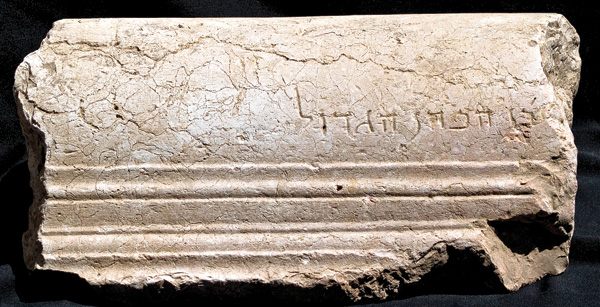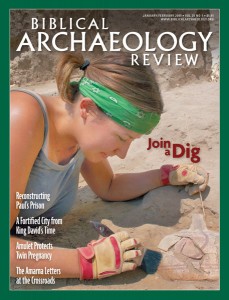Strata: High Priest Inscription Found in Jerusalem

There may not be any identifiable physical remains of the ancient Jerusalem Temple itself, but there is plenty of archaeological evidence pointing to its former existence. Another such piece of evidence came to light a few months ago when the Israel Antiquities Authority announced the discovery of a stone sarcophagus lid fragment bearing the Hebrew inscription ben hacohen hagadol (“the son of the high priest”).
The stone fragment, which measures approximately 24 by 19 inches, surfaced during a salvage excavation under the direction of archaeologists Naftali Aizik and Benyamin Har-Even, located north of Jerusalem near the construction site of the security fence. The archaeologists date the sarcophagus to the end of the Second Temple period, between 30 and 70 A.D.
The excavation has also revealed the site of a large estate. This area, called Binyamin (Benjamin) after the Israelite tribe that settled there, was known from ancient sources as the wealthy neighborhood of priestly families. The stone sarcophagus inscription was discovered in secondary use in the wall of a Muslim building that had been constructed over the ruins of the estate.
The position of the high priest was one of the oldest and most revered of the Jewish people. Starting with Moses’ brother Aaron, it was originally a hereditary title, but by the late Second Temple period, it had become an essentially political appointment.
Already a library member? Log in here.
Institution user? Log in with your IP address.

